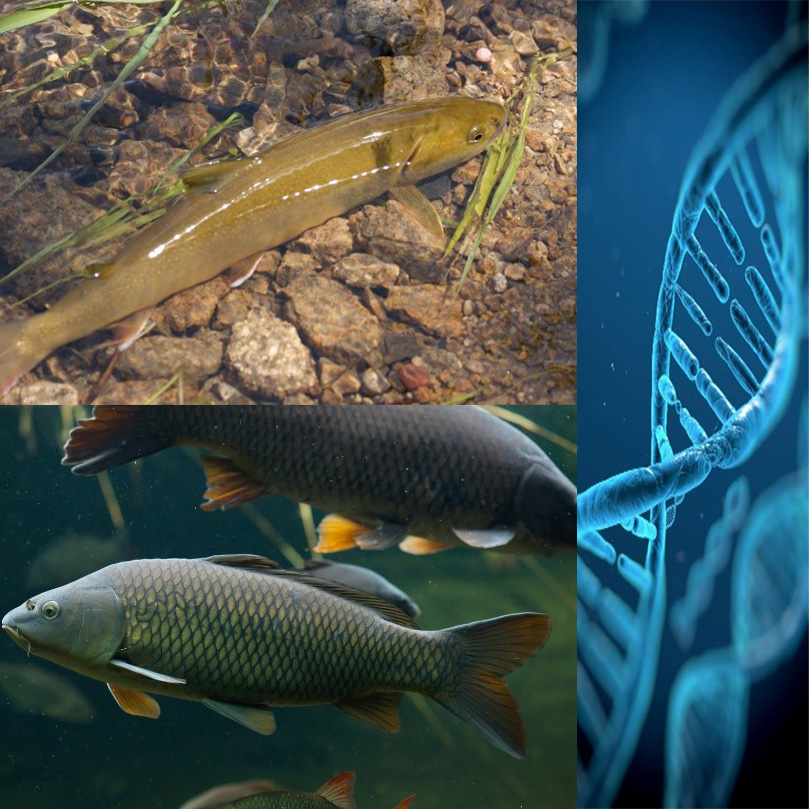
As we grow in understanding the significance different organisms have in the ecology of an environment, it helps tremendously if we know which organisms inhabit that environment – whether they’re supposed to be there or not. One method that is gaining widespread use, and relies on a simple filtration method, is the analysis of environmental DNA (eDNA) from local waterways.
As animals inhabit a river, lake, or pond, they shed off skin cells and other body waste that often contains that animal’s own unique DNA. These shed cells and their DNA can be easily isolated, by filtering a sample of collected water and then sequencing the captured DNA in a lab. The data is then compared against known organisms for that area. The data allows researchers to identify the presence or absence of organisms based on small gene sequences that turn up from the analyzed unique eDNA, just like a fingerprint on a crime scene. Sterlitech offers the 47mm, 934-AH glass fiber filters, MCE membrane filters, magnetic filter funnels, and manifolds often used in these analysis methods.
By now, many of us are aware of the serious threat to aquatic environments from invasive species. Asian carp were imported into southern states in this country in the 1970s to help keep catfish farm ponds clean; the Asian carp are filter feeders and eat plankton. But a series of floods allowed some of the carp to escape to nearby rivers where they soon flourished as a result of no natural predators.
The carp are voracious feeders and can consume up to half their body weight in plankton every day, and females can lay a half million eggs during breeding season. With nothing to control their spread in these waterways, they can quickly strip the base out of a local food chain in the rivers where they’re found. Now they’re slowly making their way north up the Mississippi and have only recently reached the outlets of the Great Lakes, where they pose a grave threat to the lakes’ ecology. eDNA sampling and filtration laid the groundwork for much of the monitoring as an inexpensive means to track their advance north.
Zebra mussels are another example of a species that set up house where they don’t belong. In the 1980s, cargo ships entering the Great Lakes that originated in Russia and Eastern Europe (where the zebra mussels normally live) would dump ballast water and inadvertently release free-floating mussel larvae. These larvae then attached to solid surfaces like irrigation water intake pipes, clogging them, and onto the hulls of boats and ships, reducing their efficiency. They are also known to grow on, and smother, the larger native lake mussels. Here too, eDNA is being used to track their spread across the country.
eDNA monitoring is not only used to monitor invasive species, but also to track endangered or threatened species in remote areas where populations are not known, or to monitor animals attempting a return to their native habitat. In the US Northwest, the Bull trout (pictured upper left) is a threatened species and are losing their habitat through decreasing water quality and warming temperatures; cold water is critical to their spawning success. If we know where the fish live, we can better direct resources and funding to maintain, protect, or restore the habitat. eDNA sampling represents the bulk of this survey method, and the use of the small 47mm filters saves tremendous time and effort!
In prior studies, researchers would attempt to capture any/all fish in a given area of a stream to see what was there. This process is incredibly laborious and costly, and only samples a tiny fraction of the entire waterway. eDNA testing allows for a single researcher to walk the length of a stream, and collect periodic samples by passing water through a filter. In one studya from the University of Montana, a single crew of 1-2 people sampled 98km of three different high mountain streams in about 8 days. Protocols already exist for grayling, shrimp, lamprey, river otters, and dozens of trout and salmonids. More tests are being developed for toads, sculpins, bass, turtles, and chubs, and all are based on eDNA surveys.
Sterlitech’s 934-AH filters, MCE filters, and vacuum equipment are perfectly suited for this type of work and are readily stocked on hand. The filters ultimately chosen should reflect the requirements of the standard procedure for your eDNA sampling process. Contact Sterlitech at [email protected] to order or learn more about these products.
a https://www.fs.fed.us/rm/pubs_journals/2016/rmrs_2016_mckelvey_k002.pdf


![Join Sterlitech at BIO 2024 [Booth #5558]: Exploring the Future of Biotechnology](https://www.sterlitech.com/media/magefan_blog/b4.jpeg)

